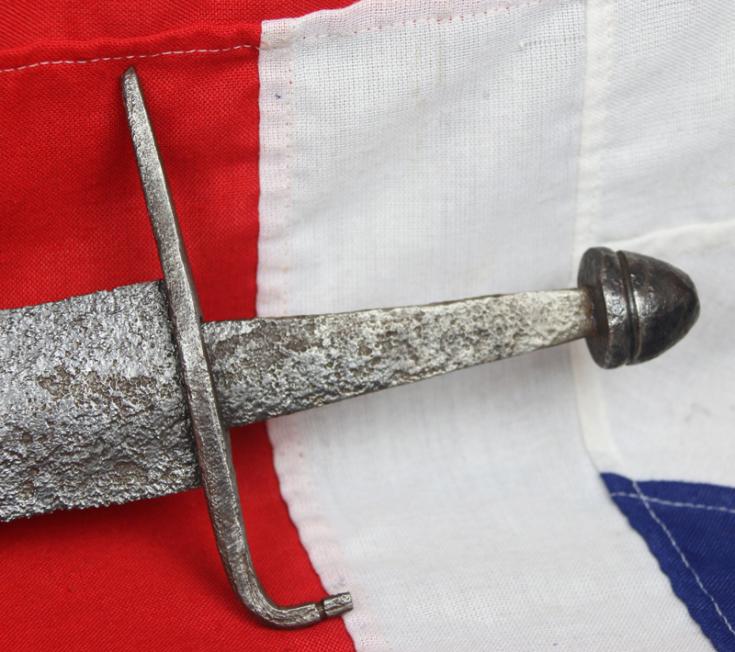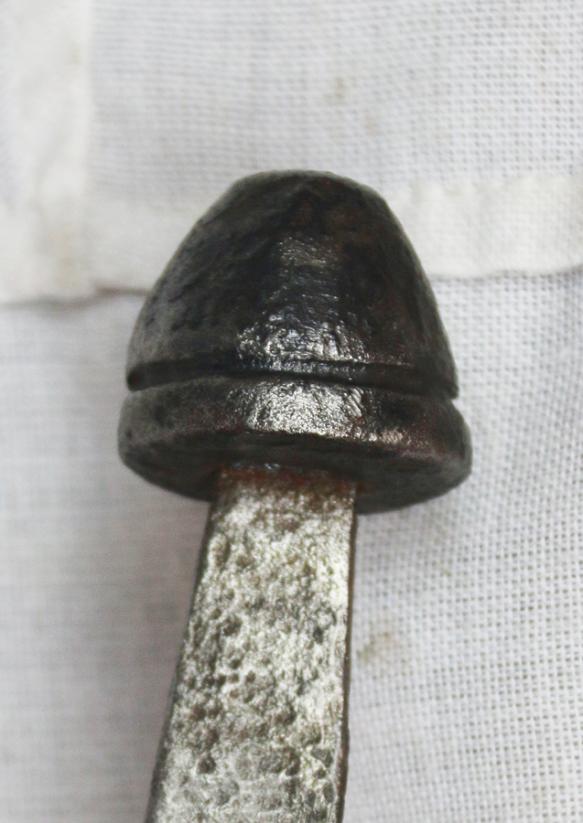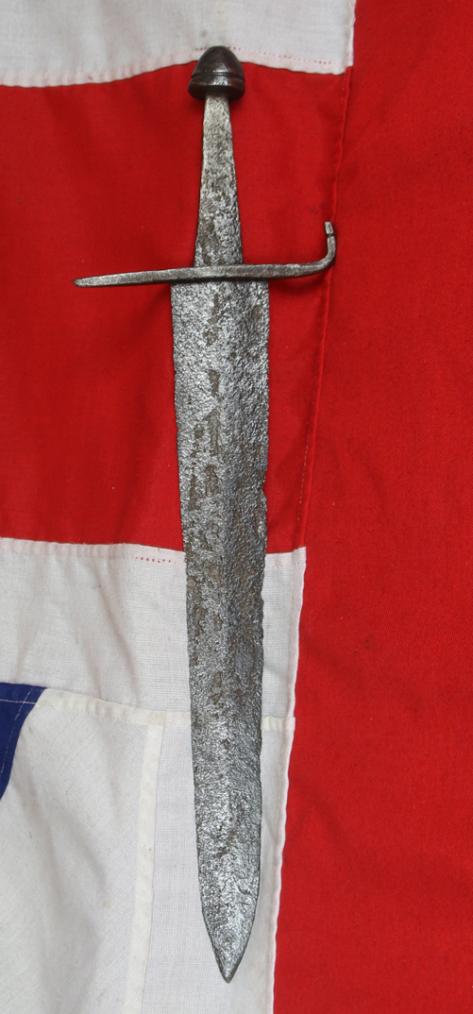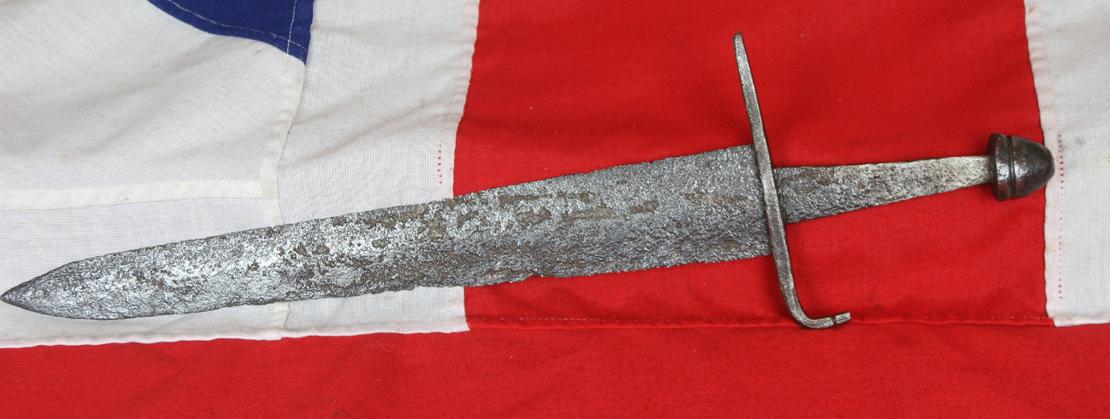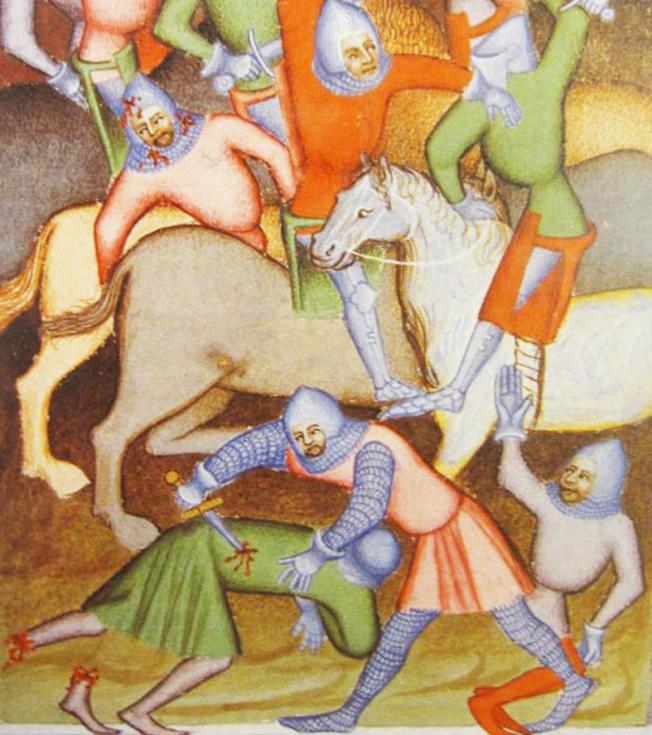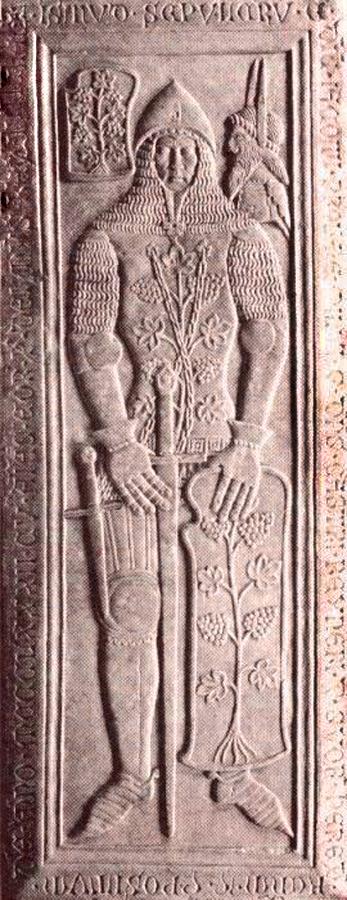A Fine & Rare Medieval Short Sword, 15th Century, Used in the Battle of Agincourt 1415 Period, The Weapon of A Man-At Arms, Or Foot Knight of The Anglo French Wars Era of King Henry Vth
What a fabulous original ‘statement piece’ for any collector of fine early arms. In the world of collecting there is so little remaining in the world from this highly significant era in European and British history. And to be able to own and display such an iconic original representation from this time is nothing short of a remarkable privilege.
A man-at-arms was a soldier of the High Medieval to Renaissance periods who was typically well-versed in the use of arms and served as a fully-armoured heavy cavalryman.A man-at-arms could be a knight, or other nobleman, a member of a knight's or nobleman's retinue, or a mercenary in a company serving under a captain. Such men could serve for pay or through a feudal obligation. The terms knight and man-at-arms are often used interchangeably, but while all knights equipped for war were men-at-arms, not all men-at-arms were knights
A fine example piece, from the ancient knightly age, from around 620 to 700 years ago. an ancient and original historical sword in usual russetted condition for edged weapons of this era, with some elements lacking, the grip would have been made of organic material (such as wood or horn) and such natural materials cannot survive so many centuries without constant care . Furthermore, almost every item made of iron from this period, even the rarest of swords and daggers in the Royal Collection, will likely be in this very same state of preservation, with overall traces of surface russetting.
This sword is probably of Italian origin, from the earliest renaissance period. Swords and daggers from Germany and Italy were often imported all around Europe and certainly into Britain for the use of warrior knights and men-at-arms..
A straight short sword, likely shortened from longer, with wide double-edged blade, shallow central groove, battle nicks to the sides, iron hilt with cross-guard in unusual Oakshott style 4 with a raised quillon, pommel in the Oakshott B1 type. After several decades of relative peace, the English had renewed their war effort in 1415 amid the failure of negotiations with the French. In the ensuing campaign, many soldiers perished due to disease and the English numbers dwindled, but as they tried to withdraw to English-held Calais they found their path blocked by a considerably larger French army. Despite the disadvantage, the following battle ended in an overwhelming tactical victory for the English.
King Henry V of England led his troops into battle and participated in hand-to-hand fighting. The French king of the time, Charles VI, did not command the French army himself, as he suffered from severe psychotic illnesses with moderate mental incapacitation. Instead, the French were commanded by Constable Charles d'Albret and various prominent French noblemen of the Armagnac party.
This battle is notable for the use of the English longbow in very large numbers, with the English and Welsh archers forming up to 80 percent of Henry's army. The decimation of the French cavalry at their hands is regarded as an indicator of the decline of cavalry and the beginning of the dominance of ranged weapons on the battlefield.
Agincourt is one of England's most celebrated victories. The battle is the centrepiece of the play Henry V by Shakespeare. Juliet Barker in her book Agincourt: The King, the Campaign, the Battle ( published in 2005) argues the English and Welsh were outnumbered "at least four to one and possibly as much as six to one". She suggests figures of about 6,000 for the English and 36,000 for the French, based on the Gesta Henrici's figures of 5,000 archers and 900 men-at-arms for the English, and Jean de Wavrin's statement "that the French were six times more numerous than the English". The 2009 Encyclopædia Britannica uses the figures of about 6,000 for the English and 20,000 to 30,000 for the French. Weight 552 grams, 53cm (21”). Fine condition.
See Oakeshott, R.E., The Archaeology of the weapons, London, 1960; Oakeshott, E., The sword in the Age of the Chivalry, Woodbridge, 1964 (1994).
The word daga in Italy and the Venetian Empire indicated a double edged and pointed short sword, used for both war and hunting, usually 40 to 60 cm long. This medieval short sword was often used during duels. Swords like this were able to penetrate thin parts of full plated armour owing to their sharp point.
Ewert Oakshott , Ronald Ewart Oakeshott (25 May 1916 – 30 September 2002) was a British illustrator, collector, and amateur historian who wrote prodigiously on medieval arms and armour. He was a Fellow of the Society of Antiquaries, a Founder Member of the Arms and Armour Society, and the Founder of the Oakeshott Institute. He created a classification system of the medieval sword, the Oakeshott typology, a systematic organization of medieval weaponry, a seminal work of world renown
Code: 23523
3950.00 GBP


